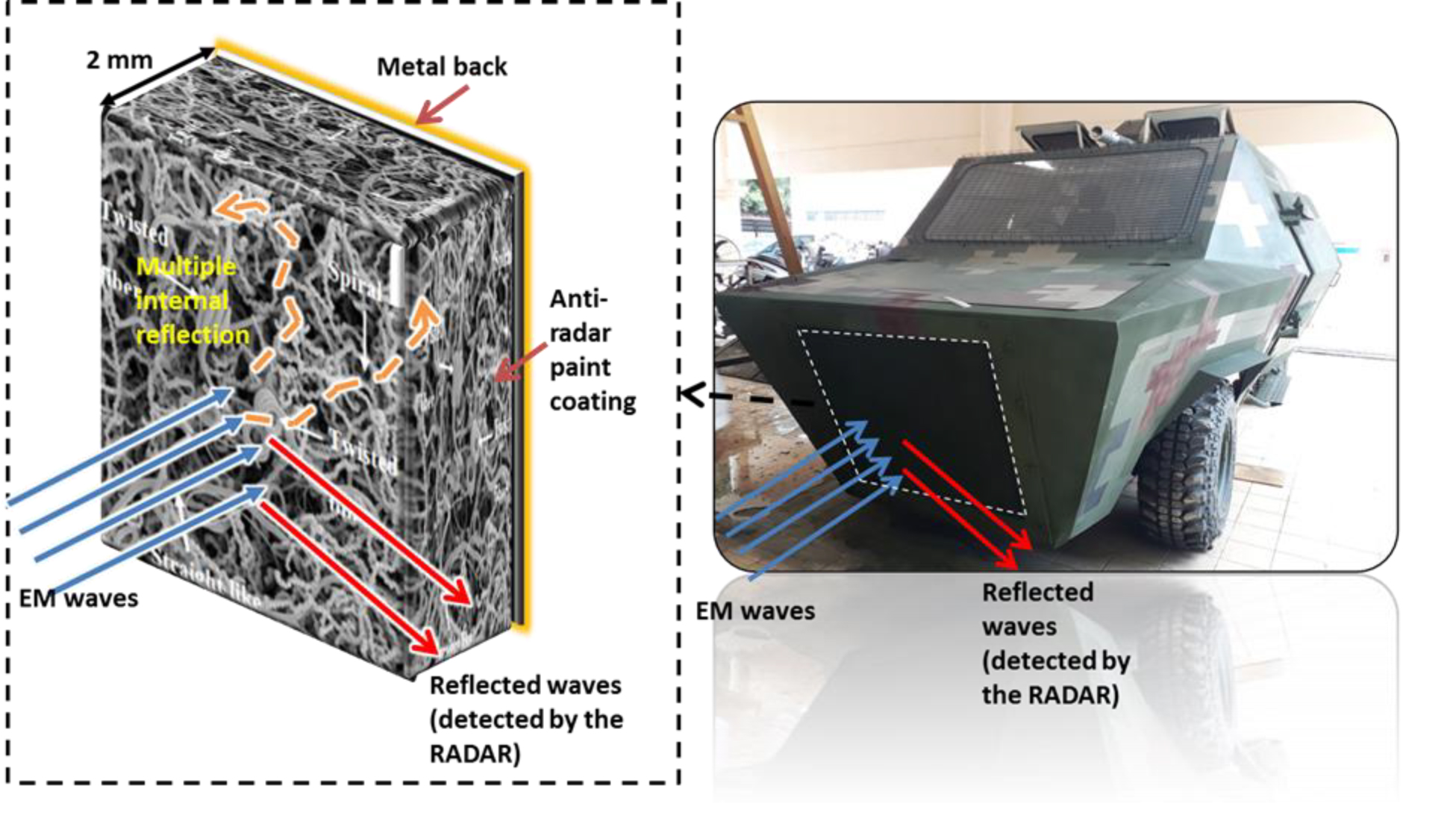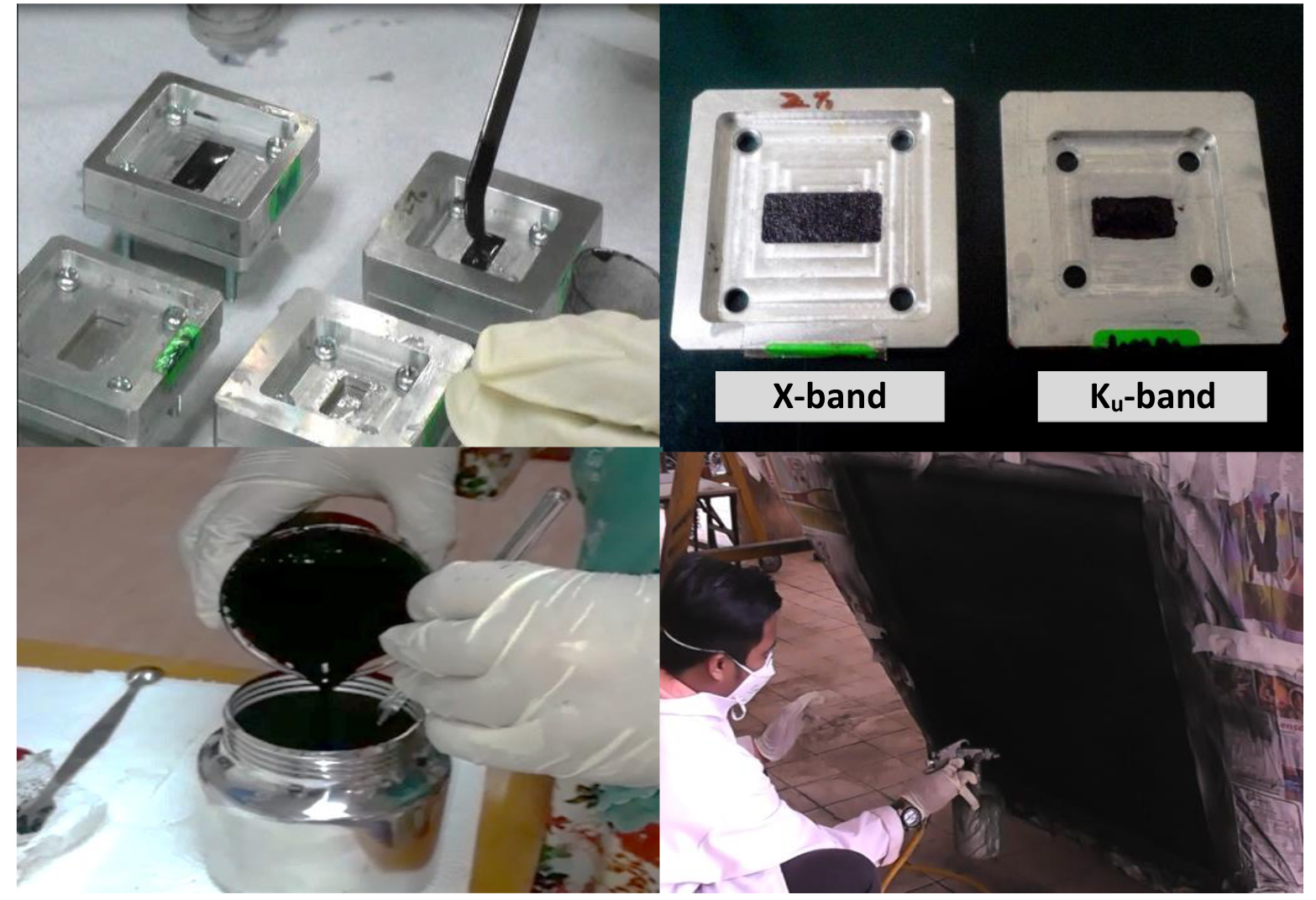Microwaves are well-known in our daily life application, mainly because of its use in our household as a microwave oven. However, did you know that microwaves technology and applications can actually work beyond than that? Microwaves, a type of electromagnetic radiation work in frequencies between 300 MHz to 300 GHz. Therefore, microwaves have a wide range of applications, including communications and radar system. However, with the continuous exposure to this electromagnetic radiation, the electromagnetic interference pollution can cause disturbances on various systems and equipment for civil and military applications [1]. Besides, microwave radiation is also potentially harmful to biological systems with continuous exposure to microwave for a considerable period. Therefore, microwave absorbing materials have become one of the most vital high-tech materials in recent years due to its capability of absorbing unwanted electromagnetic signals. Hence, applications working in higher frequencies are commonly manufactured with effective shielding to reduce the leakage of the radiation from these applications to barely detectable levels.
Principally, when electromagnetic (EM) waves are incident on a surface of a material, part of the EM waves would be reflected out from the surface or enter the surface and get absorbed by the material or transmitted through the material. Therefore, for a good microwave absorber, two essential conditions should be: i) the intrinsic impedance of the material is made equal to the impedance of the free space and ii) the incident electromagnetic waves must enter and get rapidly attenuated in the material [2].
 In Materials Synthesis and Characterization Laboratory (MSCL), Institute of Advanced Technology (ITMA), we are extensively exploring the research on synthesizing optimized microwave absorbers composites, particularly for radar absorption. Different types of microwave absorbers, including, steel-waste, biomass, carbon-based and magnetic materials, are the leading group of materials synthesized and tested in our lab in searching for microwave absorbers with strong absorption performance in a broad bandwidth.
In Materials Synthesis and Characterization Laboratory (MSCL), Institute of Advanced Technology (ITMA), we are extensively exploring the research on synthesizing optimized microwave absorbers composites, particularly for radar absorption. Different types of microwave absorbers, including, steel-waste, biomass, carbon-based and magnetic materials, are the leading group of materials synthesized and tested in our lab in searching for microwave absorbers with strong absorption performance in a broad bandwidth.
One of the main studies in our lab, funded by the Ministry of Education under the Long-Range Grant Scheme, is to develop radar-absorbing paint for absorbing electromagnetic waves used for detection. This coating would make a body of the vehicle, says the armoured vehicle, to be less reflective or invisible by radar detection. The performance of microwave absorption properties is characterized using a Vector Network Analyzer within the frequency range from 8 GHz to 18 GHz. Some of the main achievements of our study are low-cost production by reutilizing waste mill scale for radar absorbing material (RAM) fabrication. Through some modifications, only 6 to 8 weight per cent RAM from the total amount of material and paint are needed for excellent absorption, thus producing lightweight RAM. This RAM consisted of simple thin layer structure with a thickness of only around 2 to 3 mm with broadband absorption bandwidth of 6 GHz for at least >90% absorbed energy. Interestingly, the absorption of the RAM coating paint can achieve high attenuation of at least >99.9% absorbed energy.

[1] J. Wang, H. Zhou, J. Zhuang, Q. Liu, Magnetic γ-Fe2O3, Fe3O4, and Fe nanoparticles confined within ordered mesoporous carbons as efficient microwave absorbers., Phys. Chem. Chem. Phys. 17 (2015) 3802–12. DOI:10.1039/c4cp04228j.
[2] W. Meng, D. Yuping, L. Shunhua, L. Xiaogang, J. Zhijiang, Absorption properties of carbonyl-iron/carbon black double-layer microwave absorbers, J. Magn. Magn. Mater. 321 (2009) 3442–3446. DOI:10.1016/j.jmmm.2009.06.040.
Dr. Idza Riati Ibrahim
Post-doctoral Researcher
Materials Synthesis and Characterization Laboratory (MSCL)
Institute of Advanced Technology, UPM
idzariati@upm.edu.my
Date of Input: 31/07/2019 | Updated: 01/08/2019 | nursyahirah
MEDIA SHARING











 In Materials Synthesis and Characterization Laboratory (MSCL), Institute of Advanced Technology (ITMA), we are extensively exploring the research on synthesizing optimized microwave absorbers composites, particularly for radar absorption. Different types of microwave absorbers, including, steel-waste, biomass, carbon-based and magnetic materials, are the leading group of materials synthesized and tested in our lab in searching for microwave absorbers with strong absorption performance in a broad bandwidth.
In Materials Synthesis and Characterization Laboratory (MSCL), Institute of Advanced Technology (ITMA), we are extensively exploring the research on synthesizing optimized microwave absorbers composites, particularly for radar absorption. Different types of microwave absorbers, including, steel-waste, biomass, carbon-based and magnetic materials, are the leading group of materials synthesized and tested in our lab in searching for microwave absorbers with strong absorption performance in a broad bandwidth.











